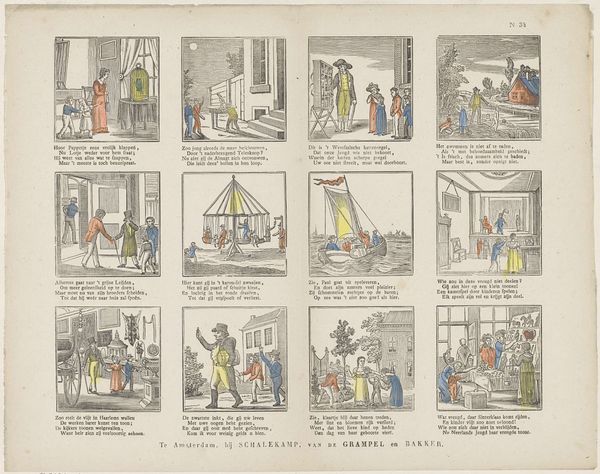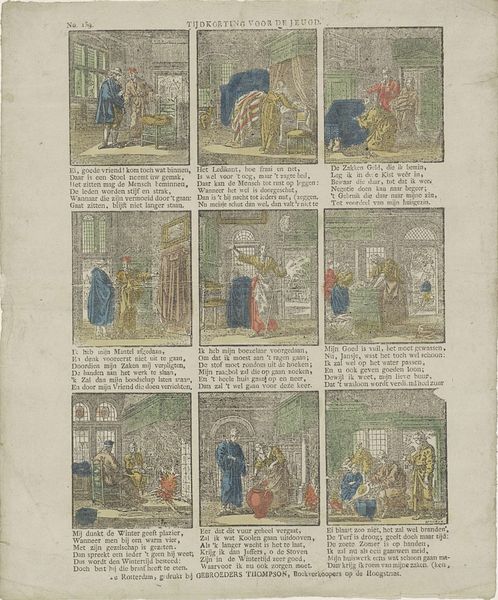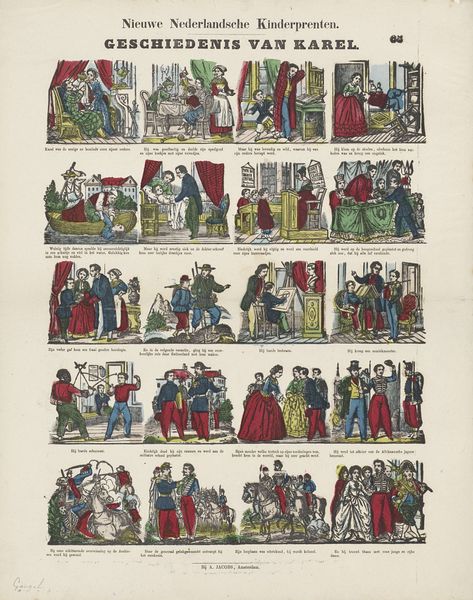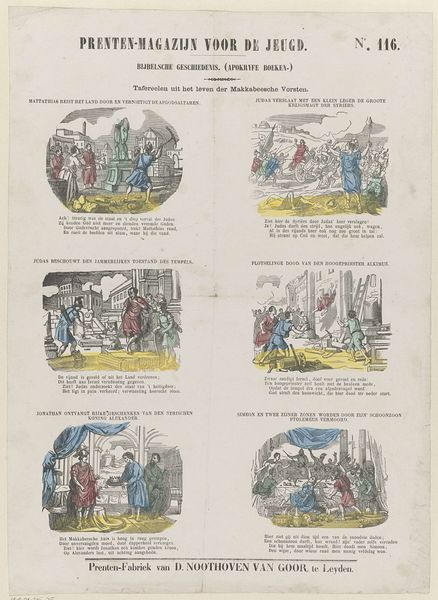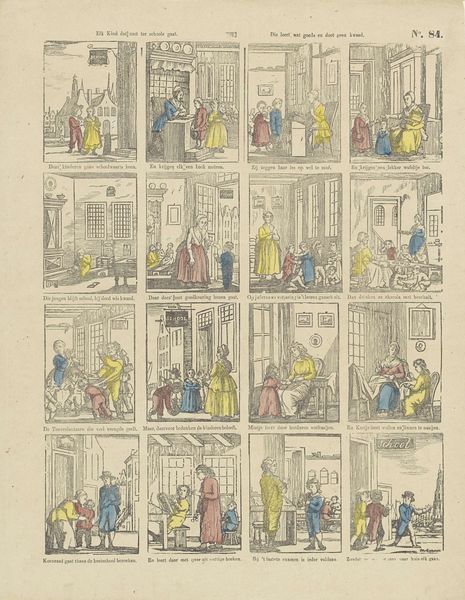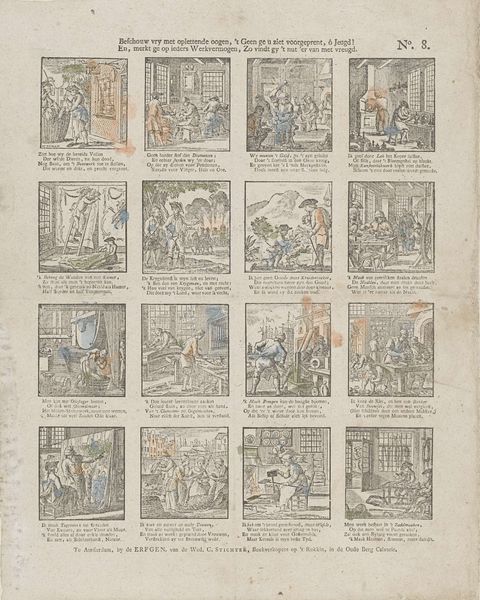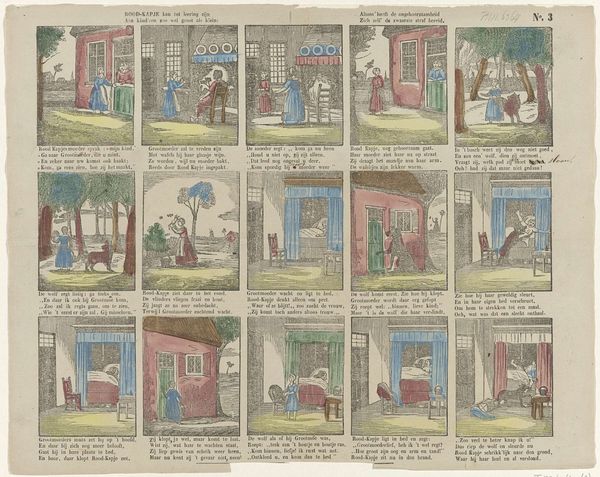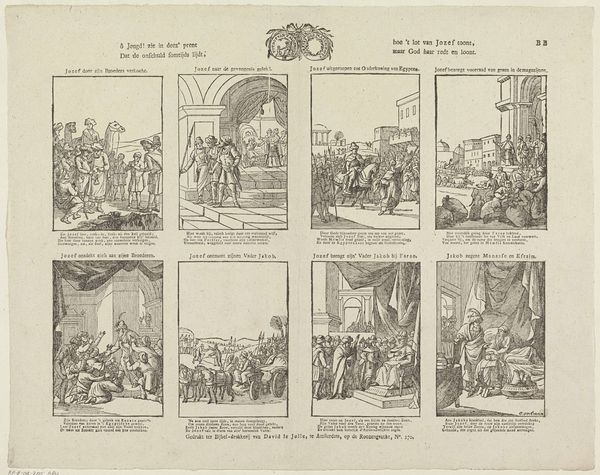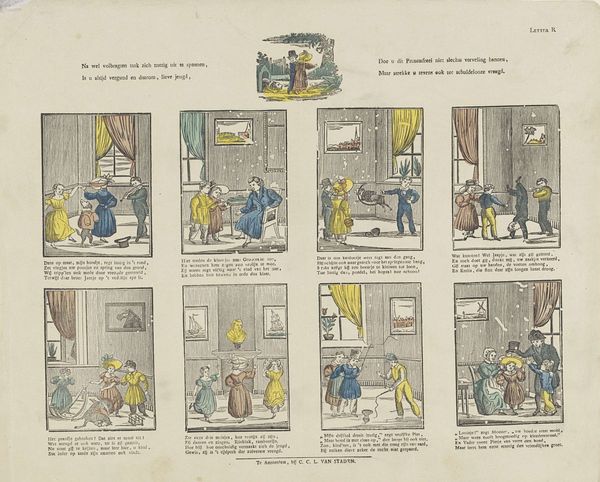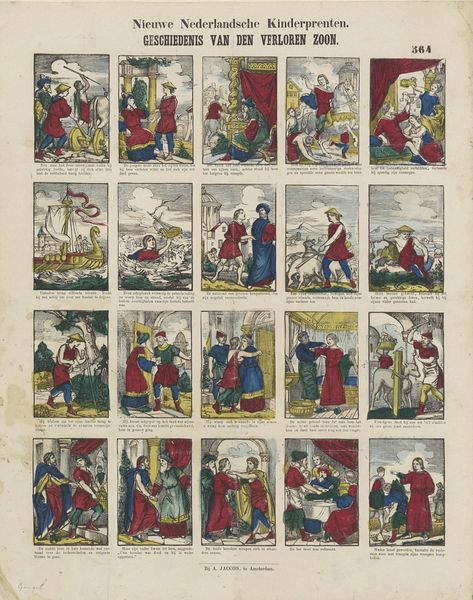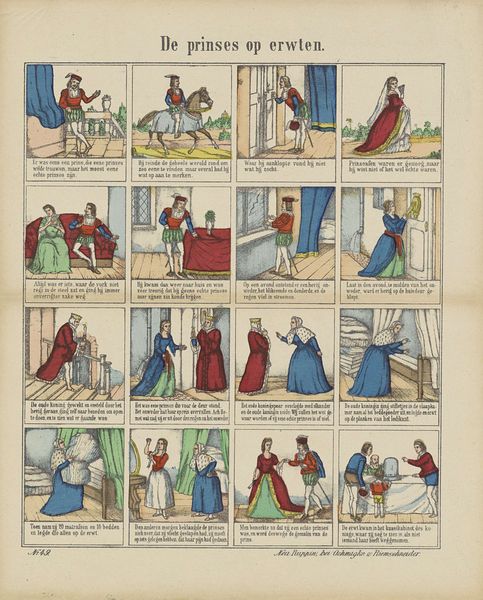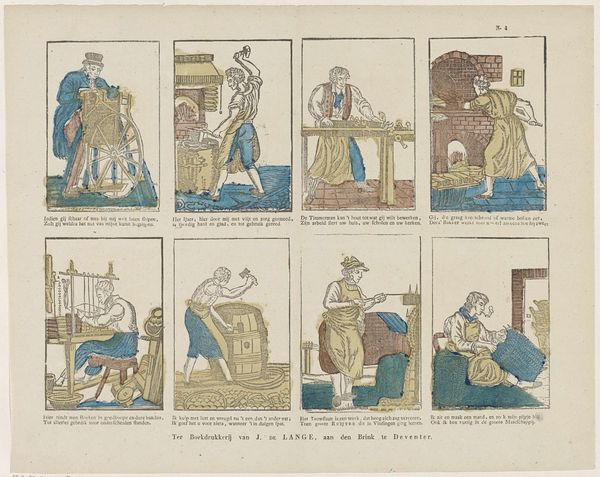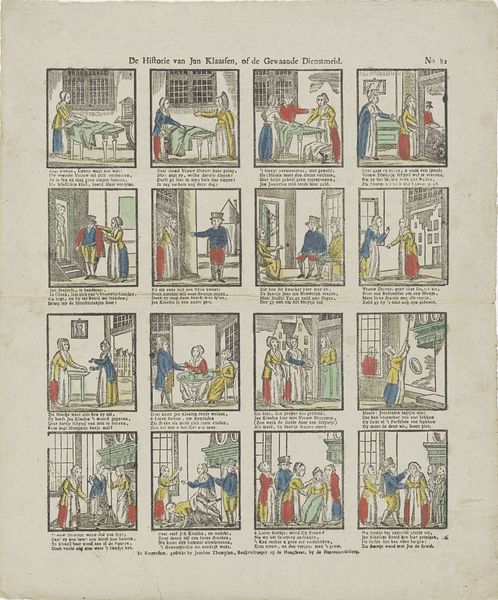
Ô jeugd! zie in deez' prent / Dat de onschuld somtijds lijdt, / Hoe 't lot van Jozef toont, / Maar God haar redt en loont 1811 - 1829
0:00
0:00
gerritoortman
Rijksmuseum
print, engraving
#
narrative-art
# print
#
geometric
#
history-painting
#
engraving
Dimensions: height 330 mm, width 415 mm
Copyright: Rijks Museum: Open Domain
Editor: This is an engraving from between 1811 and 1829, titled "Ô jeugd! zie in deez' prent / Dat de onschuld somtijds lijdt, / Hoe 't lot van Jozef toont, / Maar God haar redt en loont" by Gerrit Oortman. It’s part of the Rijksmuseum’s collection, and it shows a series of scenes. What historical narratives are embedded within the work’s visual presentation? Curator: This print, telling the story of Joseph, speaks volumes about power, innocence, and divine justice during its time. Consider how the narrative emphasizes Joseph's suffering. How might the portrayal of injustice, followed by divine intervention, function as social commentary within its historical context? Does it perhaps offer a perspective on marginalized identities? Editor: It seems like a clear message: stay faithful, and you’ll be rewarded eventually, but were the images themselves politically charged at the time? Curator: Absolutely. Remember, the early 19th century in the Netherlands was a period of significant socio-political upheaval. By focusing on Joseph's resilience against adversity, the artwork might be interpreted as an encouragement of resistance. Note how geometric elements create distinct frames – Do these contribute to compartmentalizing Joseph's narrative? How might this affect the viewer's interpretation of the overall story? Editor: I see what you mean. It is not just a simple Bible story; it may be used to illustrate perseverance against oppression of any kind. Curator: Precisely! Art is rarely created in a vacuum. The choice to depict this particular story, the visual language employed—all are shaped by and, in turn, shape the prevailing social and political discourses. Recognizing this interplay is key to a richer understanding. Editor: This has opened my eyes. Thank you for your cultural and historical interpretation. Curator: And thank you. It is through these dialogues that the stories of the artwork become more relevant.
Comments
No comments
Be the first to comment and join the conversation on the ultimate creative platform.

